I published year-end anime reviews with my personal best-of rankings in each of the last three years (see 2023, 2022, and 2021). While some of my anime articles have done well in recent months – notably some entries in my understanding anime hair color series – my year-end reviews never made much of an impression on our overall rankings. This makes me sad because those reviews are a pain to put together. I suppose one reason, for example, that my short article on height differences in a 2023 anime performed much better than my full 2023 anime review is that, while I sometimes write about anime, The New Leaf Journal is not actually an anime website. Much of our audience (perhaps you) have no particular interest in anime. Perhaps some readers who enjoy my writing skim over my anime content and find one show or another that looks interesting but do not know where to start. Today, about five months before you can expect to see my 2024 anime year-in-review (spoiler: it looks like we will have a good ranking this year), I am inviting readers to take an easy path to catching up on what will be one of the featured series in my ranking: the third season of Sound! Euphonium.
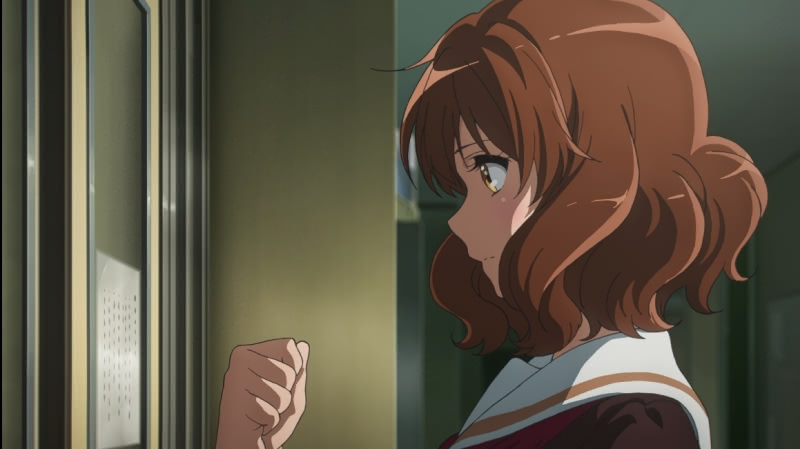
(If you already know about Sound! Euphonium and are interested in watching the movies where they are freely available, feel free to skip ahead to my notes on their availability on Tubi TV.)
2024: The Year That Is
I think my anime year-end review pieces are more fun when I hold my cards close to my chest. For example, in 2023 I wrote three full-length reviews of new anime series, but none of these three series ended up in my year-end top six. I bucked that trend this year with my reviews of the second season of The Dangers in My Heart, which I noted would have been my anime series of the year in 2023 and is an early contender for top spot in 2024, and of the excellent A Sign of Affection, which, while already eliminated from the anime of the year race, looks to be a strong contender for a good ranking when the dust settles. (I also reviewed the second season of Bottom-tier Character Tomozaki-kun which had its moments but is already relegated to the honorable mention category.) The anime year is broken into four seasons: winter, spring, summer, and fall – and a single season of an anime usually has 11-13 episodes. The three 2024 series that I have reviewed thus far were all from the winter season. The spring season had some strong shows although at the moment [I have no immediate plans to review any of them individually. One of those strong shows is the third season of Sound! Euphonium. While I will decline to give away my the full scope of my current anime of the year thinking, I will submit for the record that the third season of Sound! Euphonium will certainly feature in my year-end ranking.
(Ulterior motive for this article: By getting some of the Euphonium introduction out of the way here, I can reduce the amount of work I will have to do in December!)
Introducing Sound! Euphonium
The Sound Euphonium! anime series is based on a long-running novel series by Ayano Takeda. It focuses on the high school concert band of a fictional Kyoto high school, Kitauji High School. The protagonist and principal view-point character of the series, Kumiko Oumae, plays the euphonium (surprise!) and begins the series as a freshman member of the band (note: high school in Japan is three years so by “freshman” we mean 10th grade student).
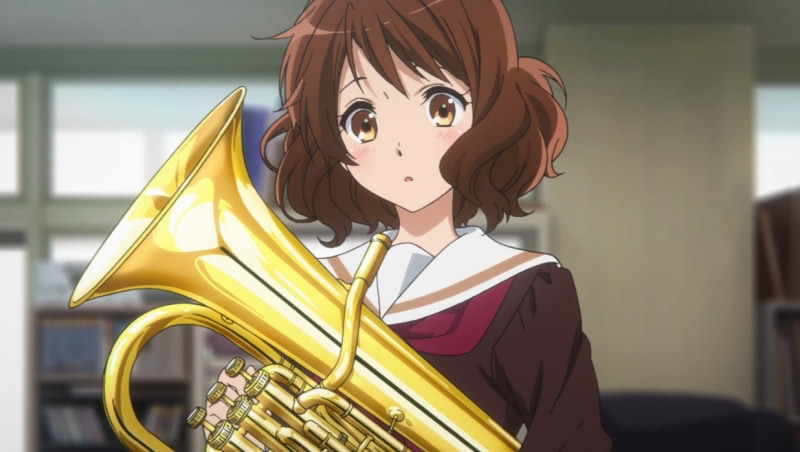
Sound! Euphonium had a long run from start to finish. The first TV anime season aired for 13 episodes in 2015 and the second season aired for 13 episodes in 2016. Recap movies condensing the first and second TV seasons aired in 2016 and 2017 respectively. The first two TV seasons and their corresponding recap movies covered the first year of Kumiko’s tenure at Kitauji High School. The third and fourth movies were released in 2018 and 2019. These two movies both covered events in Kumiko’s second year at Kitauji High School. The first of the two movies – Liz and the Blue Bird, is unique in that Kumiko and the other most prominent characters in the series faded into background roles while two second-tier characters who featured in one of the main story-lines of the second season took center stage. Liz and the Blue Bird was also crafted in such a way that prior knowledge of the series was not a barrier to entry (with that being said – I think that Liz and the Blue Bird is best watched by people who are familiar with the material covered by the first two Euphonium TV anime seasons or their respective recap movies). The fourth movie, released in 2019, covered the same year that Liz and the Blue Bird did but from the perspective of Kumiko and the main story. While I recommend watching both Liz and the fourth movie, only the fourth movie is required viewing for the third TV season. There was a theatrical original video animation covering events after the conclusion of the 2018 and 2019 movies released in 2023 (between the length of an episode and a full movie). Finally, the third and final season of the TV anime aired for 13 episodes from April 7 through June 30, 2024. The final season covers Kumiko’s senior year in high school and as a member of the concert band.
See the list below for a full breakdown of all of the TVs and movies.
- Kumiko’s First Year in High School
- Sound Euphonium TV Series 1 (2015, 13 episodes) and 2 (2016, 13 episodes)
- The first movie, Welcome to the Kitauji Concert Band (2016) is a condensed and re-mastered version of the material from the first TV season.
- The second movie, May the Melody Reach You (2017) is a condensed and re-mastered version of the material from the second TV season.
- Kumiko’s Second Year in High School
- The third movie, Liz and the Blue Bird (2018) takes place during Kumiko’s second year of high school but focuses on two second-tier characters instead of the main cast.
- The fourth movie, Our Promise: A Brand New Day (2019) covers the events of Kumiko’s second year in high school from the perspective of Kumiko and the main cast. It is the direct sequel to the events of the second TV season/second movie.
- Ensemble Contest Arc (2023) is an original video animation story that takes place after the events of the two second season movies but still during Kumiko’s second year of high school.
- Kumiko’s Third Year in High School
- TV Series Season 3 (2024, 13 episodes) covers Kumiko’s third and final year of high school. This follows directly from the fourth movie and the Ensemble Contest Arc OVA and completes the main series.
Note: I learned while reading for this article that the author of the novels extended the series beyond covering Kumiko’s first year due in large part to the success of the anime adaptation.
Anime studio Kyoto Animation is behind all of the Sound! Euphonium TV seasons and movies. Kyoto Animation has been one of the most notable anime studios over the last two decadeds, not only distinguishing itself for some of its productions (see e.g., The Melancholy of Haruhi Suzumiya, and anime adaptations of Key visual novels, including Kanon and Clannad, and the A Silent Voice movie), but also for its tendency to keep the anime production pipeline in house. Kyoto Animation was thrust into international news for reasons unrelated to its actual anime. On July 18, 2019, an arsonist set fire to Kyoto Animation’s main studio, murdering 36 (including several staffers with worked on the Sound! Euphonium series) and injuring many others. Remarkably, the studio persevered. The season three of Sound! Euphonium is its third full-length anime series since the 2019 arson attack (it also released several movies in the past five years). See Kyoto Animation’s full list of works – Kanon (2006-07), Clannad After Story (2008-09), and Hyouka (2012) are my three non-Euphonium favorites on the TV broadcast side.
While I cannot speak for the underlying novels, almost all of the TV anime and movies – with the notable exception of Liz and the Blue Bird – is seen primarily from Kumiko’s perspective. We meet Kumiko as an indecisive girl who has a slight self-loathing streak owed in large part to her self-awareness that she is indecisive and lacks a strong internal drive to do anything. Despite having played the euphonium for many years, including in her middle school band – she begins the first episode of season one ambivalent about continuing with music in high school. Moreover, she has some angst tied to a falling out she had had with her friend and middle school co-band member, a very talented trumpet player named Reina Kousaka when Kumiko was not sufficiently upset about their middle school band not winning an award in their final competition. But Kumiko is very quickly dragged into the band (almost literally) by two new friends she meets on her first day of school, and there she discovers that Reina is also attending Kitauji and joining the concert band. (Kumiko’s childhood friend and fellow band member from middle school, Shuuichi Tsukamoto, also joins the high school band). Kumiko had hoped to at least take up a new instrument, but those hopes were dashed when the biggest personality in the high school band, vice president and drum major Asuka Tanaka, discovered that Kumiko, like her, played the euphonium.
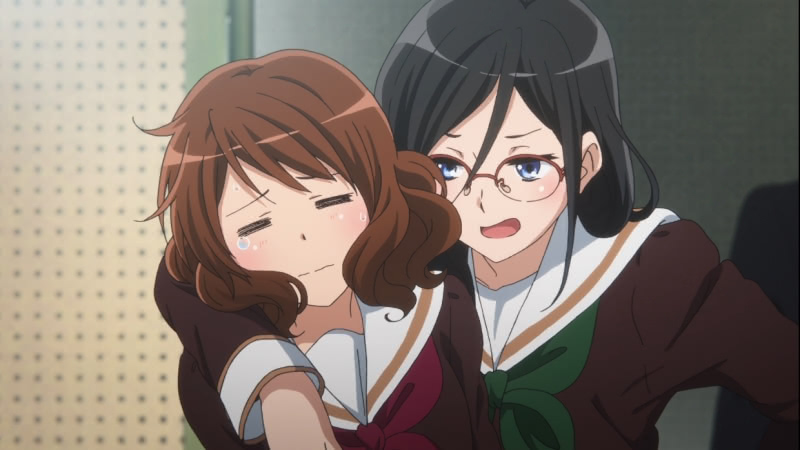
While the series focuses on Kumiko and her first year friends, it is not monofocused. Viewers are quickly made aware of the fact that Kumiko and her friends are joining a band with its own preexisting circumstances. For example, Kumiko notices that the band has a distinct dearth of second-year members, which is addressed in the first TV season. Another key point is that Kumiko and her friends are not the only additions to the band – also joining is first-year instructor Noburu Taki, who delivers one of the series’ early defining moments when he asks the band to vote on whether they want to play for fun or train to win honors in the national competition. The band’s decision to take the latter, more difficult pathsets in motion the major events of the three years covered by the three seasons and the movies.
The first season deals primarily with Kumiko settling into her new band and reestablishing her friendship with Reina. From a broader perspective, we see the band deal with the tension caused by its quest to be nationally competitive and by the effect that the addition of several talented freshman – some of whom may be more talented than their upperclassmen – have on the band’s culture. We see Kumiko, who initially was not motivated to do much of anything, become invested in the band, her own performance, and in the problems of some of her fellow band-members. The second season builds off the first, but here we see Kumiko, who comes to be seen as someone others can rely on, taking a problem solving role (whether she is seen as helpful or meddlesome depends on one’s perspective). From Kumiko’s perspective, her second year in high school was lower key than her first and second, which is perhaps why its events were confined to a single movie (the fourth movie chronologically) instead of a full length TV series – albeit it was the defining year for some other characters, such as the starring duo of Liz and the Blue Bird. The third and final TV season is the culmination of the journey of Kumiko and her peers who we were introduced to as first year students, as we see them go from new band members to the student leaders of the Kitauji Concert Band.
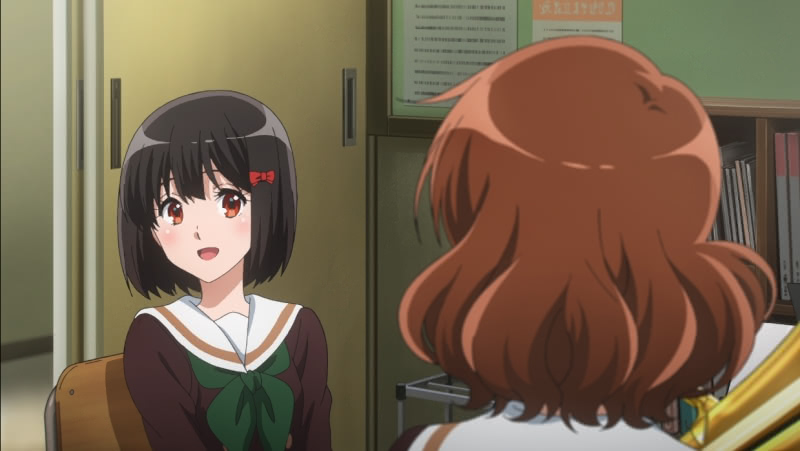
Sound! Euphonium is confident in its focus and themes. While it is set in a high school, its school focus is limited entirely to the concert band and its members. There is little drama about in-school tests and we never see the band members interact with classmates who are not in the band. Appreciating Sound! Euphonium requires appreciating that what are quaint problems from an adult perspective – for example who gets to play a solo part in a competition – are potentially all-consuming problems from the perspective of a 16-18 year old who is dedicating his or her formative high school years to a concert band club. But to the show’s great credit, it avoids a trap that bedevils similar high school club-focused anime. It recognizes that the importance of the club, the concert band, is tied to a specific point in the lives of the characters. Prior to Kumiko’s senior year (covered by the third TV season), we see her upperclassmen, especially Askuka Tanaka in the second TV season and the two main characters of Liz and the Blue Bird in that movie, grapple with thinking about their futures beyond high school while simultaneously trying to focus on their club performances. Another notch in Euphonium’s belt is that it never forgets about the characters who graduate after the fact. The band members who continue after their seniors have graduated consider what they have learned as they themselves become seniors dealing with their younger band members. As for the graduates themselves, we see them occasionally return – either to watch their former juniors perform or to offer advice – but we also see how they are growing as college students and moving on with their lives beyond high school. Euphonium strikes the balance about as well as any anime between depicting that something like a high school concert club is the most important thing to characters while they are in the club, but also that there is life beyond the concert club and that someday – soon in the case of characters who only have three years in the club and in high school – it will fade into memory. Euphonium also does an exceptional job in tying the musical performances into these broader themes.
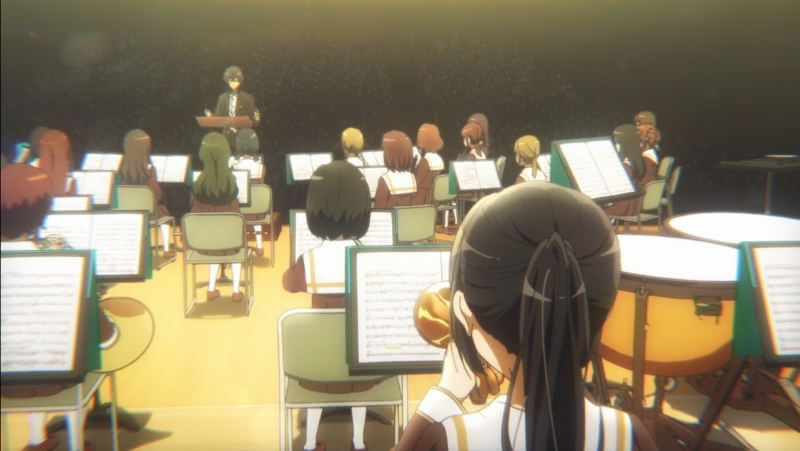
I also appreciate how Sound! Euphonium deals with issues involving effort and talent. For example, in the first season, we see the effect of Kumiko’s having played the euphonium for many years and being a well-above average euphonium player on her ability to quickly find a place in the band. Conversely, Kumiko’s friend and classmate, Hazuki Katou, plays catch-up as she tries to find a place in the band while learning how to play the tuba on the fly. In some cases we see the hard work of a character rewarded, and in other cases we see hard work take a character to the limit of his or her abilities only to come up short of his or her ambitions. In certain cases, these issues of effort and talent are relevant to a character’s consideration of his or her future beyond high school. There are also rarer cases such as that of Kumiko’s best friend, Reina Kousaka, whose overwhelming talent, work ethic, and supreme confidence are obvious to everyone around her – both for better and for worse.
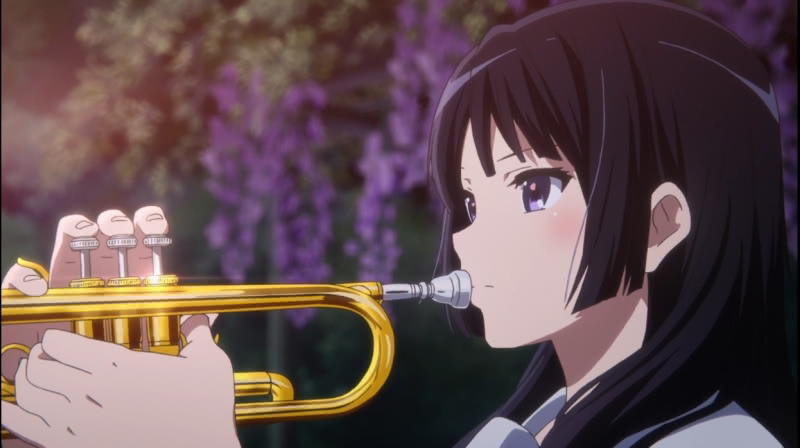
The series also benefits from having one of the defining characters of the last two decades in anime (I cite myself as the source, having watched many of the most notable anime of the last two decades) in Kumiko. I found her to be a compelling lead character from the outset because she was a well-written and distinctly feminine take on the more commonly male protagonist. But Kumiko is not static. We watch her grow – while never abandoning her core personality – throughout her first year at Kitauji High School. The Kumiko by the end of the second season is capable of things – both as a musician and as a person – that she would not have been capable of at the start of the year. Over the course of the fourth movie and final anime season, we see Kumiko grow still further, becoming a trusted senior to new band members and an advisor to her own seniors in her second year, She evolves into a true leader of the band as a senior, evincing everything she had learned during her first two years. We see how Kumiko is influenced by others, chiefly her best friend Reina Kousaka and her senior, Asuka, but she also influences those around her, including Reina and Asuka (in turn), but also many of her same-year peers.. Those who benefit include a girl named Natusuki Nakagawa who also plays euphonium and is one year Kumiko’s senior, and the underclassmen who come to look up to Kumiko who join in her second and third years. But Kumiko’s growth, as striking as it is, realistically comes in fits and starts. The final anime season shows that Kumiko still has to grapple with the weaknesses that caused her to dislike herself when we first met her. Moreover, as a third-year student, Kumiko finds herself facing down the challenges that her mentor in the first two seasons, Asuka Tanaka, and the dual protagonists of Liz and the Blue Bird, had to confront before her.
Another notch in Sound! Euphonium’s belt – and one that makes it worth watching for people with an interest in anime who may not be drawn to its very distinct themes of high school students living in the moment while contemplating their futures — is its aesthetics. Kyoto Animation has long been known for its artisanal, high-quality animation work in its adaptations, even for series that are not supported by the strong writing and characters of a Sound! Euphonium (see e.g., my animation honorable mention work for its previous TV series, the second season of Tsurune, in my 2023 year-end review, as an example of Kyoto Animation putting together an aesthetically impressive piece that was let down by a mediocre-to-decent story.) Sound! Euphonium’s first season in 2015 was most likely the prettiest visual production of the year, and it generally kept up that quality in 2016. Liz and the Blue Bird is an audio-visual masterpiece and the apex of the series in both regards (to be fair – movies have some obvious production pipeline advantages over TV series), and it stands as one of the most aesthetic anime pieces ever produced.
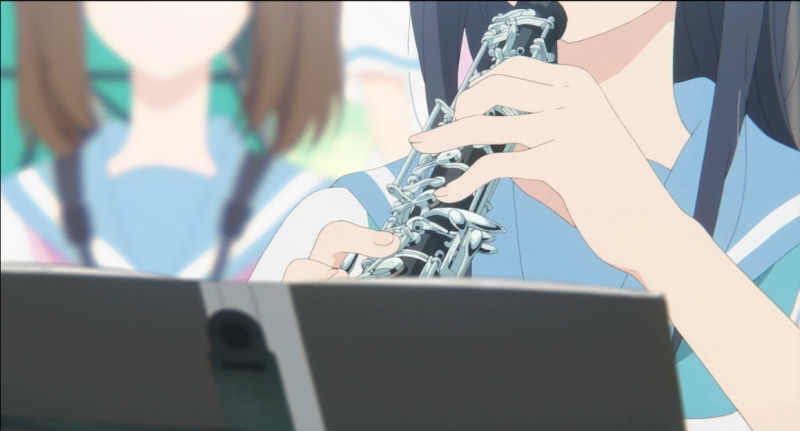
As impressive as the first and second TV seasons were, the third stands above them visually – I found myself thinking while watching the fifth episode in May that the third season of Sound! Euphonium may be the prettiest – not the most dynamic, but the most visually aesthetic – TV anime I have watched. Sound! Euphonium’s detail regarding band performances here is impressive even to an amateur like me. Enough care goes into the musical performances that it is easy to distinguish them and tell when the band is playing well and when it is struggling. This was most significant in the first season but it comes through at some very key points in both Liz and the Blue Bird and in the latter stages of the third and final TV season.
With all my praise noted – the first two seasons of Sound! Euphonium, while excellent on the whole, fall slightly short of what I typically look for in an anime of the year level show. The first season was the best of the first two and it came in third on my list of best anime of 2015 (trailing My Teen Romantic Comedy SNAFU! Too and Shirobako, albeit 2015 was admittedly a strong year at the top, and Euphonium’s first season was probably better than my 2023 anime of the year choice). I found the first season impressive but its key drama was more band-centric than later seasons and the broader perspective that would come to define the later stages of the series was not yet in the forefront. The second season is my runner-up choice for best anime of 2016 (behind the first season Showu Genruku Rakugo Shinju – which was one of the better shows of the decade), but I thought it was a bit weaker than the first, lacking some of the standout musical performances and tight writing of the first season and having what I found to be some pacing issues in the early going. But with those caveats granted – the second season was very good in a vacuum and began to more distinctly explore the idea that the high school concert band is an ephemeral thing in the grand scheme of the lives of its members. Liz and the Blue Bird was, pound for pound, the strongest individual piece of the series and, having watched the final season, I will note that its themes fit in very well despite being a side story. The other movie covering Kumiko’s second year was strong, albeit, as I said, it is more of a transitional piece since Kumiko’s second year was not quite as dramatic as her first.
As for the third and final TV season which aired in 2024, I will reserve my thoughts on that – beyond the thoughts I noted above – for my year-end review in 2024 anime.
My Sound! Euphonium Story
I watched the first TV season of Sound! Euphonium when it aired in 2015. For one reason or another, I did not get around to watching the second TV season until 2022, notwithstanding the fact that it first aired in 2016. This is strange because I liked the first season enough to include it as an honorable mention selection in December 2020 on my list of recommended anime series for general audiences that aired in the 2011-2020 decade, but I had to include a note explaining that the recommendation did not encompass the second season or the subsequent movies since I had yet to watch them.
Go figure.
Thanks to The New Leaf Journal, I know that I began re-watching the first TV season in April 2022 (it had been seven years, after all) and I was entirely caught up with the second TV season by May 4, 2022. I noted in my May 2024 Leaflet that I had ordered the latter two movies so I could fully catch up with the series (note I have never watched the first two movies because while I am sure they are fine recaps, I had watched the full TV seasons that they recapped). I do not recall when I learned that there would be a third and final anime season, but after some more unexplained foot-dragging, I caught up on Liz and the Blue Bird and the fourth movie shortly before the beginning of the third and final TV season in April 2024.
How You Can Catch Up For My Eventual Year-End Review
All three seasons of Euphonium and all of the movies are currently, as of the publication date of this article, available on Crunchyroll. For those not in the know, Crunchyroll is the biggest legal (as in they actually pay for the rights to the anime they stream) player in anime streaming outside of Japan, vacuuming the lion’s share of new shows while smaller players in anime streaming such as HiDive and Netflix get the rest.
(For whatever it is worth, I will note that my 2022 anime of the year and first and second 2023 runner-ups aired on HiDive instead of Crunchyroll, as did my first anime of the year candidate for 2024, the second season of The Dangers in My Heart. So Crunchyroll does not get everything worth watching.)
It would be easy for me to tell readers to just subscribe to Crunchyroll and watch Euphonium there, but making an account is a process and Crunchyroll is not the cheapest service – especially for taking a flier on the recommendation of the editor of The New Leaf Journal. Moreover, I am sure many readers are already subscribing to and paying for other streaming services. Since I would not tell readers to find Euphonium through other means (admittedly doing so would be easy enough without much help), I needed a different solution.
I was inspired to write this article because I only discovered today that Sound! Euphonium is streaming for free on Tubi TV – with a couple of caveats regarding the definition of Sound! Euphonium. I use Zotero to bookmark interesting articles and to save potential future writing topics for future reference. I bookmarked an article about Sony, which owns Crunchyroll, folding a former anime streaming service and publisher called Funimation into Crunchyroll and then hiking Crunchyroll’s prices. To be sure, there are some monopoly concerns about Crunchyroll – but I have mixed feelings on the subject that go beyond the scope of this article. The following quote caught my attention:
Some legal alternatives for users who don’t want to switch to Crunchyroll could be HIDIVE, Tubi TV, or the anime selection on Netflix, although it must be admitted that Crunchyroll currently has almost a monopoly in the anime streaming services in terms of content.
I subscribe to HiDive and obviously know of Netflix, but I was unaware that Tubi TV, which I was tangentially aware of, has an anime library. I figured I may as well see what was going on over at Tubi TV. I discovered that Tubi Tv has a decent little anime collection focusing mostly on movies but also having a small number of TV series. As I scrolled through it, I noticed that Tubi TV has all four Euphonium movies. This did not mean much to me at first since I had already seen the entire series – including the final 2024 anime series. But then it occurred to me that I could highlight the movies for readers who may be interested in (A) trying a very good anime (B) in a format that is both free and officially licensed.
Below, you will find the links to the movies on Tubi TV in order:
- Sound! Euphonium: The Movie – Welcome to the Kitauji High School Concert Band
- Sound! Euphonium the Movie: May the Melody Reach You!
- Liz and the Blue Bird
- Sound! Euphonium: The Movie – Our Promise: A Brand New Day
Before continuing, note that this is up to date only as of the publication date of this article. I did not know that Tubi TV had anime prior to a couple of days ago, much less all of the Euphonium movies. I have no knowledge of how long they will be available on Tubi, so if you want to watch – I would recommend visiting sooner rather than later. I do not plan to regularly check on Euphonium’s Tubi TV status but I will update the article if I become aware that there is some change.
(Disclaimer: I am only recommending that people watch the Euphonium movies on Tubi TV because they are freely and legally available there and I will be writing more about the series in the future. Rest assured I have no other interest in whether you watch Euphonium or anything else on Tubi.)
I have a few notes about the Euphonium movies on Tubi TV.
Firstly, the first two movies on Tubi TV have Japanese dialogue with English subtitles while the latter two movies are available only in the English dubbed version. I have not watched a dubbed anime in a long time and it goes without saying that I prefer Japanese dialogue with subtitles, but I know that many people prefer dubs. Unfortunately, there is no choice on Tubi TV at the moment, so viewers will have to take the movies as they come and both dub- and sub-partisans will have some reason to be unhappy. (Crunchyroll has both options for all four movies.)
Secondly, the first two movies are condensed versions of the first two anime seasons. I have not watched them – having already watched the full seasons. Euphonium is not a show where so much happens that I think condensing six episodes into just under two hours would be an issue – especially in the case of the second season, which I previously noted had some pacing issues. I am sure there are some notable little things that had to be cut, but they movies were certainly crafted with all of this in mind, so I am reasonably confident that going through all four will give viewers all of the major story points.
Thirdly, there is the matter of Liz and the Blue Bird, which takes place in parallel with the fourth movie but focuses on two relatively minor characters (its stars play a key role in the first half of season two, or the second movie here, but they are not on par with Kumiko and Reina in terms of significance). For those actually watching the full series instead of checking out Liz in isolation, Liz and the Blue Bird should be reserved for after the second movie. I personally recommend watching it before the fourth movie, but one could watch it and the fourth movie in either order.
Finally, Tubi TV does not have the original video animation mini-movie that aired in 2023, but that is not necessary for catching up for the final season.
If you are not a regular anime watcher but enjoy my articles and want to know what I am talking about in my 2024 anime year-end review this December, I invite you to make use of Tubi TV to catch up on everything in the Euphonium! series prior to the final 2024 season. That you can watch the first two TV seasons in the form of two movies instead of 26 TV episodes lowers the barrier to entry before we even consider the fact that Tubi TV is free. If you take me up on the free offer and enjoy it, you should have time to watch the fourth season (perhaps with a Crunchyroll trial – if they still do those – or short-term subscription) before it finds its way somewhere in my 2024 ranking here on The New leaf Journal. (I will note additionally that another 2024 show which I wrote seven articles about, A Sign of Affection, is also available on Crunchyroll.)
Even if the themes and characters of Euphonium! do not land for every viewer (entirely possible), it is worth watching just for its top-of-the-line production values and attention to detail. On both counts, it represents the best that Kyoto Animation has to offer.
Other New Leaf Journal-noted series on Tubi TV
Tubi TV has a decent number of shows and movies worth considering given its small library. I will take the time to note two that have made New Leaf Journal appearances – again with the caveat that this note is up to date as of the publication of this article and I am sure that Tubi TV’s lineup is subject to change.
- Usagi Drop: Usagi Drop is about a single salaryman in his 30s who decides to take care of a young girl who is apparently his late grandfather’s daughter. I wrote a full article explaining that despite thinking Usagi Drop is, in a vacuum, a borderline anime of the year-quality piece with appeal to viewers who have no interest in anime per se, I did not include it in my list of recommended series for general audiences from 2011-2020.
- Kimi ni Todoke (seasons 1 and 2: Kimi ni Todoke is a high school-based romance that aired for 39 episodes from 2009-2011. I wrote an article about hair color in Kimi ni Todoke when I got around to watching it 10 years late. To my surprise, it has unexpectedly received a third season announcement (which was good for the view count of my prior hair color analysis), and that third season will begin on Netflix in August 2024 (13 years after the second season – that has to be some kind of record).
- Toradora! Subtitled and Dubbed: Toradora! is a 24-episode high school romantic comedy (and occasional melodrama) that aired from 2008-09. I noted it in my essay about height differences in anime romances (Toradora! is a textbook case), as an example of a series that uses wacky hair colors to aesthetically distinguish characters, and as a point of comparison to a 2023 anime I reviewed called The Angel Next Door Spoils Me Rotten.
Of the three, Usagi Drop is the best series and of the most potential interest to non-anime reviewers, granting the caveats and baggage I discussed in my essay about the show. Kimi ni Todoke and Toradora! are more conventional anime/manga/light novel romances, with the former being of interest because of its unique heroine and the latter because, granting its flaws and passion for occasional eruptions of angsty melodrama, it is a fun show and arguably educational for people who want to get a feel for anime and specifically late-2000s anime. There are of course other interesting shows on Tubi TV that I have not, as of yet, had an occasion to discuss in these pages. I will single out the artistically impressive Millennium Actress as a movie that can be appreciated without any specific interest in anime.
Final Thoughts
Upon discovering Sound! Euphonium on Tubi TV, I was inspired to point readers to it in light of the fact that I will certainly have more to say about the final season of the TV anime adaptation come December 2024/January 2025. It is a very good series on the whole, and I encourage readers to give it a try for the aesthetic animation, overall solid writing, and for making it easier to follow along with my upcoming discussion of the piece in a few months.